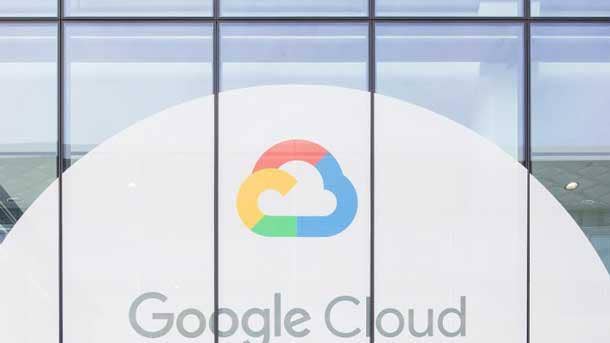Nutanix’s Dheeraj Pandey On Google ‘Speculation’ And ‘Unprecedented’ Transformation
The Nutanix CEO talks with CRN about the recent speculation that Google could acquire Nutanix, partnerships with Dell Technologies and Hewlett Packard Enterprise, and the biggest opportunities for channel partners.

Dheeraj Pandey Bullish On Nutanix’s Future
Nutanix CEO Dheeraj Pandey has a clear message to the IT world: The hyper-converged infrastructure pioneer has its eye on the end game with a “massive” market opportunity ahead.
“Nutanix has always stood for taking the short-term pain for the long-term gain,” said Pandey in an interview with CRN. “We are one of the only companies to go and build an operating system from scratch. In the last two decades, there’s only been Amazon and Nutanix that have really come out as an operating system company.”
San Jose, Calif.-based Nutanix has nearly completed its transformation from an appliance and software company into a software and subscription provider. With software and support revenue up 7 percent to $287 million in the company’s recent fourth fiscal quarter, Nutanix customers can now buy portable software licenses that run in public and private clouds as well as on bare-metal offerings in public clouds.
In an interview with CRN, Pandey talks about recent speculation that Google could acquire Nutanix, partnerships with Dell Technologies and Hewlett Packard Enterprise, and the biggest opportunities for channel partners.

Research firm Trefis says you’re a strong acquisition candidate for Google. Can you talk about that, along with your relationship with Google?
A lot of this is just speculation, so we don’t comment on speculation. … In terms of making sure that we are playing in a multi-cloud world, we are working with all three of the hyper-scalers very closely. With Google, we have this special product called Xi Test Drive which a lot of our sellers and a lot of our prospects are now using. We’re running on top of Google’s hypervisor and our own hypervisor runs on top of it. So there’s great innovations [with Google]. We’re working closely with Google in Kubernetes. We will continue to see many innovations come out with this partnership.

How does Google compare to the AWS and Microsoft Azure stack in terms of Nutanix technology?
For us, what’s really important is making computing invisible anywhere. When I say ‘anywhere,’ I mean in the cloud—private, public and edge, and it also means multi-server, multi-hypervisor and multi-cloud. Nutanix is about running our software and services on anybody’s platform. That’s where we are different. Right now, one of the hyper-scalers is building their own stack, but we can take their software and run it on an Azure stack. That’s how we look at ourselves, where infrastructure is now an app that runs on someone else’s platform or our own platform. Sometimes we are a platform company and an app company, and sometimes we’re an app company running on somebody else’s platform. This is exactly what our customers need because now they have the freedom of choice around innovation and around their digital transformation. We are not coming and forcing them to pick a stack. We have to do things where we are highly portable—we are multi-cloud and our software and services can run in any location: private, public or edge.

With both Dell and HPE coming out with new offerings on VMware Cloud Foundation, how do you see Nutanix’s partnership with Dell and HPE playing out?
A lot of the cloud is about delivery and operations. When I say ‘delivery,’ I mean identity, billing and payments, and making the operations one-click. A lot of work that we’ve done in the last 10 years is to make Infrastructure as a Service fully automated. Not just day-zero provisioning, but day two and beyond [around] operation workflow, shrinking and growing the cloud, making clouds elastic, upgrading and patching them. A lot of the work that Nutanix is doing is to really help with the Dell server patching and HPE server patching. You’re seeing security vulnerabilities emerging in the space of hardware and firmware. Look at Intel [having a vulnerability] really almost every quarter now. So a lot of Nutanix’s workloads are becoming the new standard for automation including in the private cloud itself. There’s a ton of work that we’ve done with other server vendors like Fujitsu, Lenovo, Hitachi and others around the world. Now Nutanix software runs on more than 20 server platforms. This is the same company that three years ago was an appliance company and now our software runs on all these different server platforms. At the core of all of this is that they all need to work the same. So with standardization, that comes with overall automation of these servers in whatever cloud they are in. Because without automation, there is no cloud.

With as-a-service becoming the way channel partners make margins, how should Nutanix partners transition into a more as-a-service model?
If you think about overall cloud transformation and for all our customers the digital transformation that they talk about, a lot of it is about digital delivery. A lot of it is about invisible infrastructure—how do you really make continuous innovation possible and continuous delivery possible? So in many ways, the channel has to transform itself for the new cloud world. Most of the money is in consumption. They [should] help consume all these cloud credits with their professional services and have the ability to integrate different services because now in the world of cloud there are a lot of micro-services and unique services that need to come together. That is where the opportunity for the channel really is. Step up to become cloud transformers to really make money on consumption and professional services. Learn to become very good at security. Learn to become very good at the integration of different clouds because most customers will have multiple clouds, not just one cloud. So Nutanix has taken a lot of time and effort in our research and development to think about multi-cloud orchestration, multi-cloud automation, cloud migration—a lot of these things are really needed in the channel in the coming years.

Can you talk about Nutanix’s software and subscription momentum?
If you take a look at our quarter four earnings, we exceeded the Street expectations in billings, revenue, gross margins and we also provided guidance above industry expectations in billings, revenue and gross margins. So the company is going through this transition, as we have spoken in the last year or so about, going from hardware to software, and software to subscription. It’s one of the hardest transitions. Maybe no one else in IT has done it. The overall transition is looking good. We have our first few early signs of what this could look like. Customers are very happy when we look at Net Promoter Score. There’s strong growth in our deferred revenue balances with 44 percent year-over-year growth. Subscription revenue now represents 71 percent of total billings. We added 990 new customers in the quarter. The overall attach of new products is at an all-time high, with 26 percent of all our deals now using some product beyond the core. In general, repeat business from our customers is also at an all-time high. So if you look at how our existing customers continue to buy from us, it’s never been better.

What’s your message to partners, investors and the market?
Nutanix has always stood for taking the short-term pain for the long-term gain. The market is massive, and there’s massive opportunities for us. Our customers are doing more with us than ever before. A lot of our employees think like missionaries in that they don’t think about the next few months, they’re thinking about the next three to five years. As a company, we are one of the only ones to go and build an operating system from scratch. In the last two decades there’s only been Amazon and Nutanix that have really come out as an operating system company. So to do this from nothing and not even being 10 years old—in September we’ll be 10 years old—tells you really about how much our customers love us and how much our employees continue to build this business for the next decade. So it’s all about taking the short-term pain for the long-term gain.
Nutanix is going through its own digital transformation going from appliances to software to subscription—it is just unprecedented in the history of IT. We’re doing all of this because if we didn’t digitally transform ourselves, there’s no way we could transform our customers digitally as well.